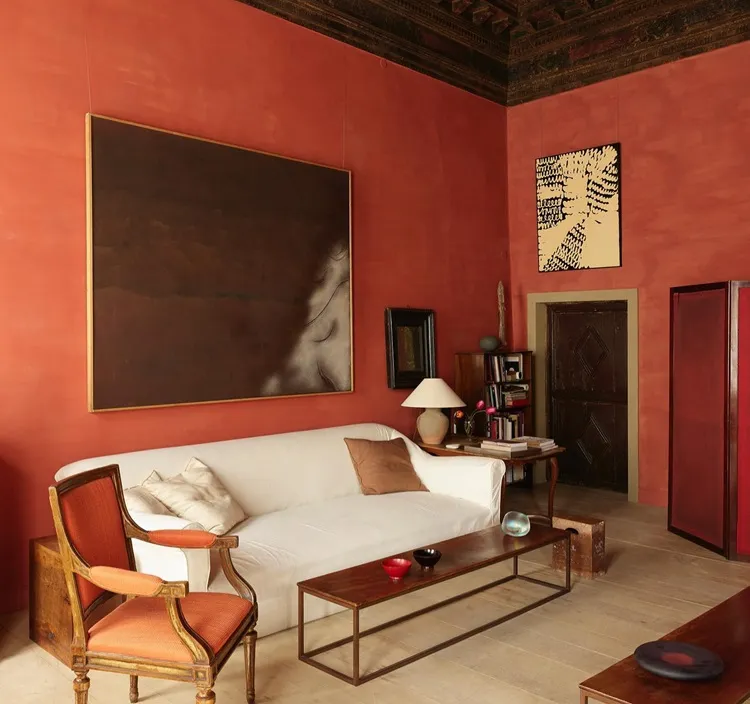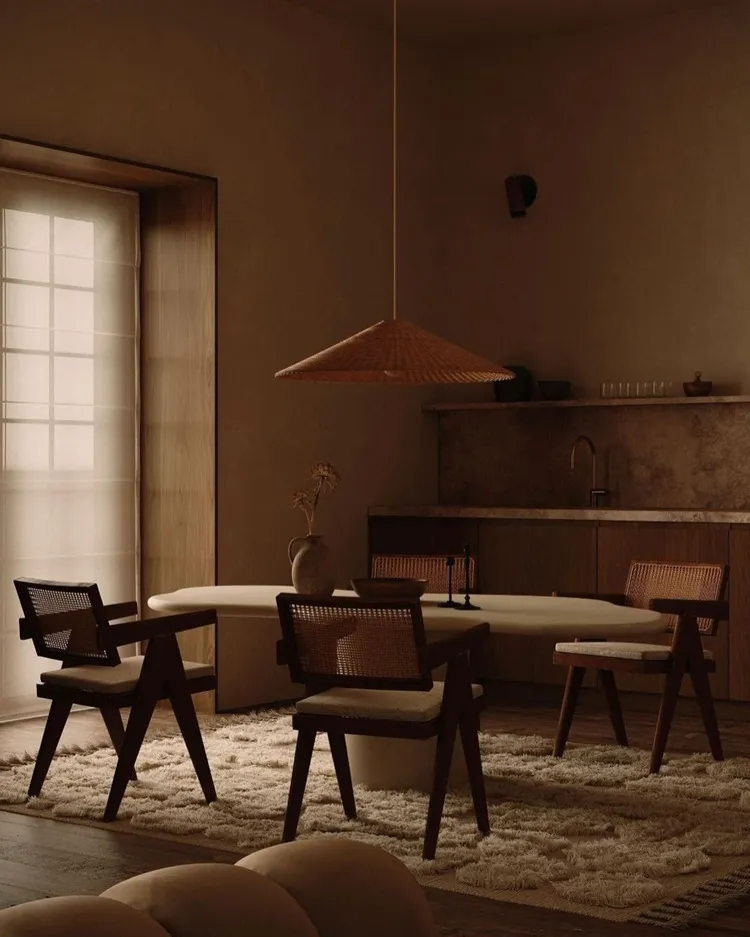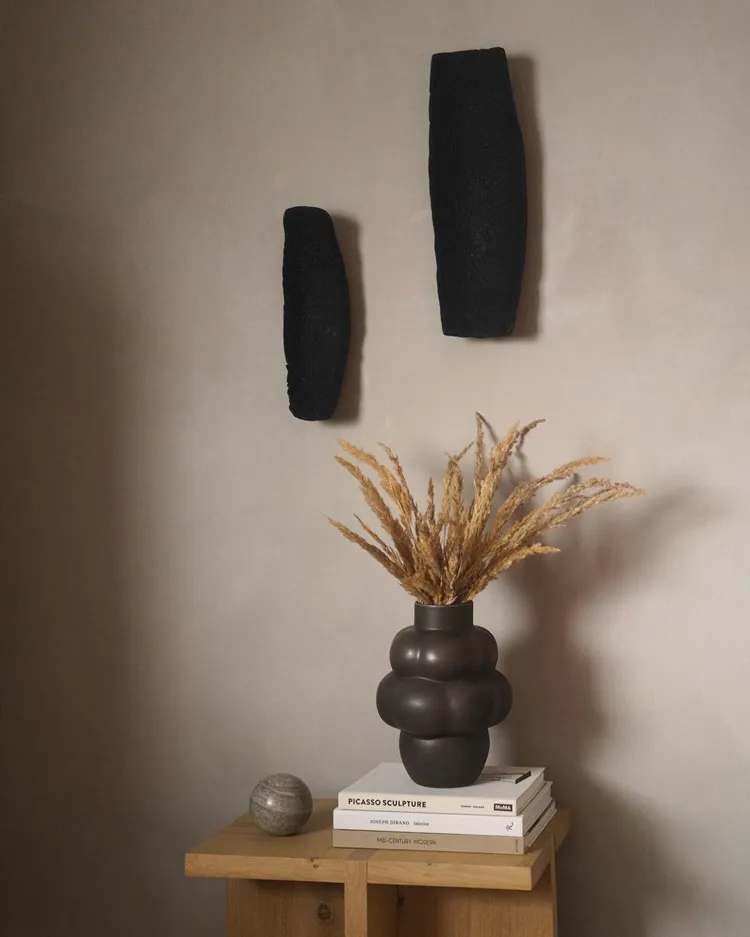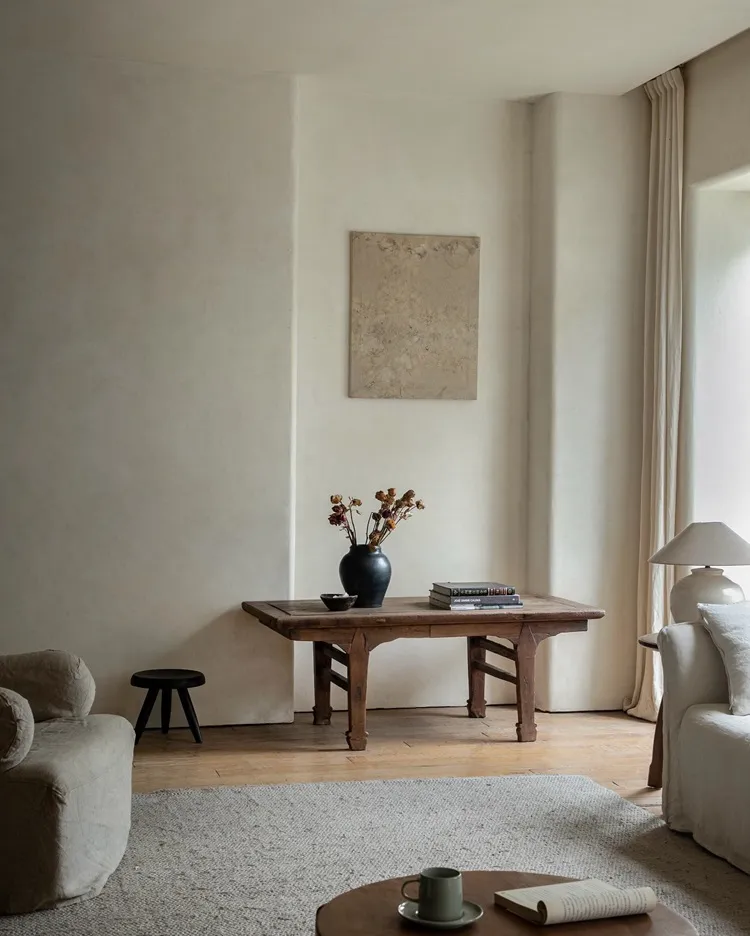Our home should be a place of comfort, tranquility, and harmony that helps us unwind and recharge from the hustle and bustle of the outside world. The Japanese have come up with a philosophy called wabi sabi which can translate as embracing the gifts of the simple, quiet, and organic life which allows one to accept and appreciate the beauty of imperfection. This approach to life has sprung into existence an aesthetic, which we are now starting to see more often than ever as our day-to-day is getting busier and our minds and bodies are in search of peace and serenity. We’re going to show the key elements of wabi sabi interior design to guide you in the creation of your own perfectly imperfect sanctuary!
What is Wabi Sabi Interior Design?
The ideology of wabi sabi is rooted in embracing the natural impermanence of things and appreciating the authenticity that comes with it. Within the realm of interior design, it is characterized by raw, nature-derived elements that make up a rather minimalist space that aims to connect us with nature and bring us back into our innate center.
How is Wabi Sabi Relevant Today?
Nowadays, social media is dictating the majority of how we think we should be living our lives – from the clothes that we wear to what we eat, and drink, the places we visit, our routines, interests, and even goals. This is causing more and more people of all ages and walks of life to feel insecure and doubtful about their position in the world and whether they’re “on track”. Our senses are overstimulated, our nervous system is in overdrive, and as a result, the overall quality of our life is declining. What we need is to slow down and exist in the present moment without getting into constant competition in which the loss outweighs the gain. This is exactly what the philosophy of wabi sabi is teaching us – being content with less, which brings more harmony, beauty, and sustainability into our lives.
What are the Principles of Wabi Sabi Design?
The wabi sabi home is comfortable, inspiring, loved, and always a work in progress. The beauty of this aesthetic approach lies in its simplicity, which makes it so easy to implement in any home, regardless of how big or small. In her book Wabi Sabi: Japanese Wisdom of a Perfectly Imperfect Life, the writer Beth Kempton shares some of the most common terms that people use to describe this Japanese ideology, some of which are:
- Asymmetrical
- Humble
- Organic
- Nostalgic
- Raw
- Primal
- Simple
- Unrefined
- Inspired
- Underrated
Let’s take a look at the key components to follow in order to turn your house into a home.
Utilize the Vestibule
In Japan, the vestibule is called genkan, which is one of the most practical areas of their homes. This is the first area you enter when you walk through your doorstep, so it’s important that it feels welcoming. Try to keep it as tidy and organized as possible by incorporating storage spaces where you can put away your shoes and clothing. Add a vase with fresh flowers, a diffuser with a scent that brings calmness, or anything else that makes you feel instantly relaxed.
Use Organic Materials
If you are someone who already has a rather minimalist aesthetic but wants to add character to your spaces, an effective way to achieve that is by incorporating different textures and materials. Wood, clay, stone and bamboo are the most commonly used ones in wabi sabi the reason for which is that they age beautifully and also act as a bridge, connecting the inside to the outside.
When not in a position to refurbish your home, or you don’t have access to such materials, you can think of other ways to welcome nature. For example, fresh flower arrangements (take a look at Marie Kondo’s guide to Ikebana), branches, feathers, leaves, stones, and handmade wreaths are all a medium for creating sustainable beauty in your home.
Read also: Organic Modern Interior Design – Complete Guide to the Latest Home Décor Trend!
Bridge the Gap Between Old and New
What makes your space feel uniquely yours is the personal touches that you add to it. Incorporate elements with history, things that awaken positive memories, and create a contrast between the past and the present, the material and the spiritual. Repurpose old items, or get creative and make new ones that can have either a functional or decorative purpose.
Opt for an Earthy Color Palette
Have you ever paid attention to the way the color palette of the spaces you occupy makes you feel? Bright shades have a stimulating and energizing effect on us, while cool tones bring us a sense of clarity and calmness. In a wabi sabi home, the focus is on shaping an atmosphere that feels grounding and soothing. To achieve that, we use nature-inspired, earthy tones such as warm browns and grays, muted greens, and deep yellows.
Flexibility of the Spaces
The traditional Japanese houses are rather simple in terms of layout, which allows their occupants to utilize the spaces more effectively. They use modular furniture and items with a multipurpose design that can be used to transform the function of the space when and if necessary. This adaptability of the space not only allows you to experiment with your creativity but also allows your home to transform and evolve with you. If possible, try not to over-clutter your spaces with too many furniture pieces, but rather focus on a few that you’ve chosen carefully and feel like they resonate with your unique personal style. Choose items that you know you’re going to love forever and will bring you genuine joy when using them.
Read also: Creating a Japanese-Inspired Living Room: Tips and Ideas for a Serene and Elegant Space





